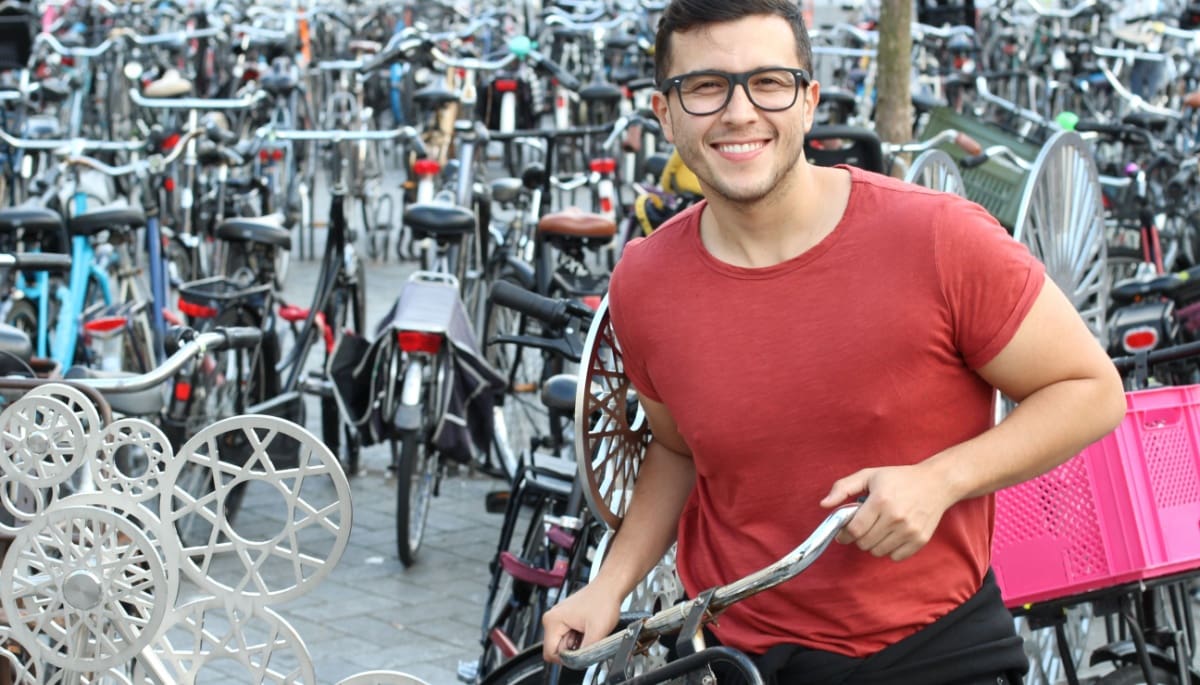Last summer, tensions rose in physics laboratories around the world. Suddenly there was work to be done. South Korean researchers claim to have developed a material that conducts electricity without resistance, and without losing energy, at room temperature and normal pressure. Such a superconductor that works under everyday conditions is the holy grail of physics.
Experts were skeptical about the new substance, called LK-99. And almost no one thought it could be a superconductor. However, they jumped on him. “There were research groups that invited their staff back from vacation to recreate the material and test it,” says physicist Milan Allan of Leiden University. Within a few weeks, the study was replicated by different research groups, and as expected, this claim turned out to be without water. LK-99 was not the desired superconductor at room temperature.
Why would physicists cut short their summer vacation if they were skeptical about LK-99? “Discovering a superconductor at normal temperature and pressure would be a very big breakthrough,” says Mazhar Ali from TU Delft. “It will herald a new era of modern technology.”
Superconductors are materials that conduct electricity without resistance, and therefore without energy loss. This is in contrast to ordinary conductors, where free current-carrying electrons can collide with atoms in the material, causing them to lose energy (and the material to heat up). Superconductivity was discovered in 1911 by the Dutch physicist Heike Kamerlingh Onnes, who in 1908 in his laboratory in Leiden was the first to cool helium to the point that it became a liquid. While cooling mercury (Hg) with cold helium, he discovered something unexpected. The electrical resistance suddenly disappeared completely when the metal cooled to -269°C – four degrees above absolute zero of -273.15°C.
More superconducting materials have now been discovered, some of which can be used to make exceptionally strong magnets. Because superconductivity only occurs when materials are cooled to very low temperatures or under high pressure, its applications are limited to places where a large, expensive cooling installation is not a problem. For example, they are used in MRI scanners, experimental quantum computer technology, and particle accelerators.
Superconductors that would not have to be constantly cooled would make many energy-efficient applications possible. Like, for example, a floating maglev train that has no rolling resistance. This is possible thanks to the so-called Meissner effect, which occurs when you place a magnet over a superconductor, or vice versa. A strong electric current is then generated in the superconductor, generating a magnetic field. The generated magnetic field is strong enough to cancel out the magnetic field of the magnet. This causes the magnet to float above the superconductor and vice versa.
Other applications for room temperature superconductors include energy-efficient electronics, inexpensive MRI scanners, ultra-efficient motors, and low-loss electrical cables. “Currently, about 15 percent of the electricity generated by power plants is lost before it can be used in the home,” Ali says. “Superconducting cables could significantly reduce this. It would therefore be possible to build solar collectors in the sunniest places on Earth and from there to efficiently transmit energy around the world.
The Meissner effect on an image from a video by South Korean researchers, who presented it as evidence of room-temperature superconductivity with the material LK-99. Photography by Hyun Tak Kim
Electron pairs
Although superconductors have been around for more than a century, it has proven difficult to create a material that conducts electricity without resistance at normal temperatures and pressure. “It’s not possible to take materials that superconduct at very low temperatures, like lead or aluminum, and modify them slightly to make them work at high temperatures,” says Alan. It turns out that you have to design completely new materials. Theorists have no ready-made recipes for this. The theory behind superconductivity is complex, which is why research to date has been mainly experimentally based.
After the discovery of Kamerling-Ons, it took nearly fifty years before American physicists John Bardeen, Leon Cooper and J. Robert Shriver found a theoretical explanation. Their BCS theory, named after the first letter of their surnames, attributes superconductivity to the formation of electron pairs. In normal conduction, bulk electrons transfer an electrical charge through the material, causing current to flow. These electrons encounter resistance because they sometimes collide with atoms or each other, for example. Normally, negatively charged electrons repel each other. But according to BCS theory, they can form pairs under certain conditions, such as extremely low temperatures. Because of quantum mechanical phenomena, these pairs, called Cooper pairs, can move frictionlessly through matter, causing electricity to flow through the matter without losing energy.
Cup of tea
BCS theory appears to be a good explanation for superconductivity in ultracold metals such as mercury. But in 1986 it turned out that this theory was not the whole story. That year, Swiss researchers Georg Bednorz and Alex Müller of the technology company IBM discovered superconductivity at a temperature as low as -235 degrees Celsius. This was a big surprise because physicists at the time believed that superconductivity was not possible at temperatures higher than -240 degrees Celsius.
What’s more, this new form of superconductivity occurs in a ceramic material, which typically conducts electricity poorly. “The material looks more like something you would make into a tea cup than an electrical wire,” Ali says.
In less than two years, other researchers discovered similar ceramic materials that proved to be superconducting at increasingly higher temperatures. Some even withstand temperatures higher than -195°C. This was a huge advance, because you no longer needed to cool the material with liquid helium. The less expensive and less rare liquid nitrogen is sufficient.
Currently, about 15 percent of the electricity generated is lost before it can be used
How excited physicists were at the time about high-temperature superconductors became clear in 1987 during a conference in New York with a session on these new superconductors. The room was so crowded that hundreds had to watch the presentations from the lobby. “At the time, it seemed as if everyone in physics was working on superconductivity,” Ali says. During this session, now known as the “Woodstock of physics,” it seemed that room-temperature superconductors would not take long to emerge.
This turned out to be cause for optimism. It has not yet been possible to develop a theory that can fully explain this new type of superconductor. “Bednorz and Müller’s surprising discovery confirmed that there is still a feeling that an unexpected material might suddenly appear that turns out to be superconducting at room temperature,” says Ali.
Right: Setup in the Ranga Dias Superconductivity Laboratory at the University of Rochester.
Photography by Adam Finster
Vibrations in the atomic lattice
Although enthusiasm for superconductivity waned after its peak in the late 1980s, researchers have continued to work on it. Several types of superconductors are now known, including hydrogen-containing materials, called hydrides, which must be placed under high pressure. British physicist Neil Ashcroft suggested the existence of these substances. He saw that pure hydrogen and hydrides could change under high pressure into materials that could superconduct at relatively high temperatures.
The reason is that vibrations in the atomic lattice of matter help form the electron pairs needed for superconductivity. An atomic lattice consisting largely of light hydrogen atoms vibrates faster than a lattice containing heavier atoms. Faster vibrations create more strongly coupled electron pairs and thus stronger superconductivity. This requires very high pressure. To reduce this pressure, Ashcroft in 2004 proposed fusing hydrogen with heavier atoms. The hydrogen atoms will then form a cage around the heavier atoms. This produces a structure that remains intact at low pressures.
There is no fundamental reason why this cannot happen
Over the past decade, physicists have studied many of these hydrides. For example, in 2015 they discovered that sulfur hydride (H2S) Superconducting up to -70°C. Lanthanum hydride (LaH10) reached -20°C in 2018. These materials still have to be compressed to a pressure close to that found in the Earth’s core. This is more than a million times the atmospheric pressure. This is only possible if you compress the material between two diamonds, as other materials cannot withstand this pressure. Although these superconductors are scientifically interesting, the high pressure required makes them completely unsuitable for practical applications.
Superconductivity at high pressure and near room temperature (15°C) appears to have been achieved in 2020 by research group Ranga Dias of the University of Rochester. The group used a mixture of hydrogen, sulfur, and carbon. But criticism soon arose about the way Dias’ group analyzed the measurements. To prove superconductivity, you must prove that electrical resistance disappears at a certain temperature. In addition, you must prove the Meissner effect by showing that the material repels an external magnetic field. The second measurement in particular is complicated if the material is sandwiched between two diamonds. For this reason indirect measurements are needed. It turns out that the way this was done was questionable. Moreover, other researchers were unable to reproduce the results. Dias’ post was withdrawn in 2022.
However, Dias Group achieved a greater result at the beginning of this year. After production under high pressure, the mixture of hydrogen, nitrogen and lutetium will be superconducting at a temperature of 21 degrees Celsius and “only” ten thousand times the atmospheric pressure. Other researchers have not yet been able to reproduce this, which raises doubts. It doesn’t help that Dias is now under investigation following allegations of data manipulation and plagiarism in previous work.
Tip of the iceberg
Despite Dias’s unreproducible results and his conclusion that LK-99 was a mirage, Alan and Ali remain optimistic. “I’m still excited about superconductivity at ordinary temperatures and pressures,” says Alan. “There are physicists who think I am wasting my time on this research because it is not possible. But I think they are wrong. “There’s no fundamental reason why it can’t be done.”
“I strongly believe it is possible,” Ali agrees. Progress is being made steadily and we are only 150 degrees away from it. At high pressure less. Moreover, we have only explored the tip of the iceberg. There is still a lot of possible material. I think the question is not if we will find superconductivity at ordinary temperature and pressure, but when. I hope I can still try it.”

“Total coffee specialist. Hardcore reader. Incurable music scholar. Web guru. Freelance troublemaker. Problem solver. Travel trailblazer.”



/s3/static.nrc.nl/wp-content/uploads/2024/04/26152545/data114819028-6ce62a.jpg)


/s3/static.nrc.nl/bvhw/files/2023/09/data105497419-74be60.jpg)
More Stories
The poorer the neighborhood, the fewer the number of vaccinations
Outgoing museum director Andreas Blom remains loyal to Groningen and is wary of floundering. “You must give space to my successor.”
Not only are these beautiful moths resistant to highly toxic plants, but they also use the poison to seduce their mate